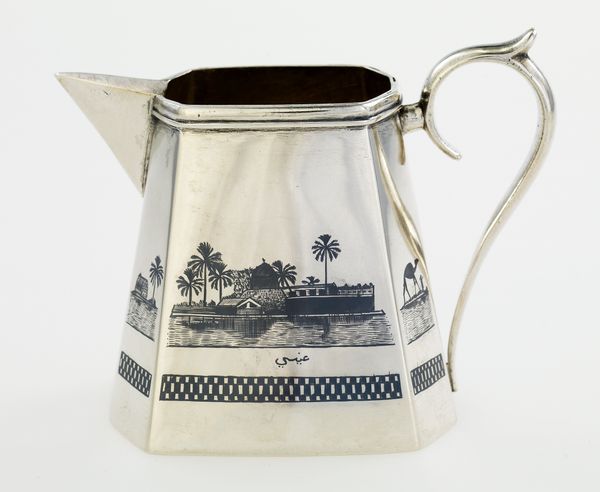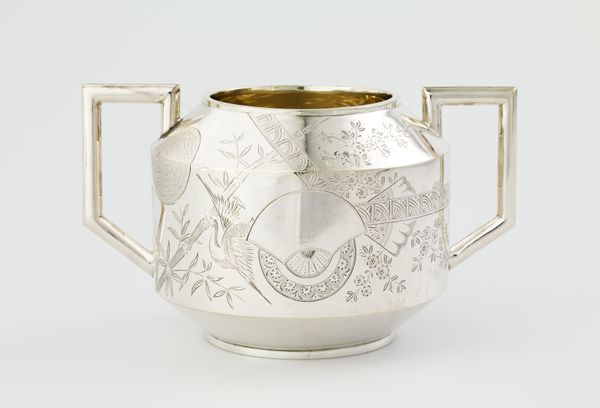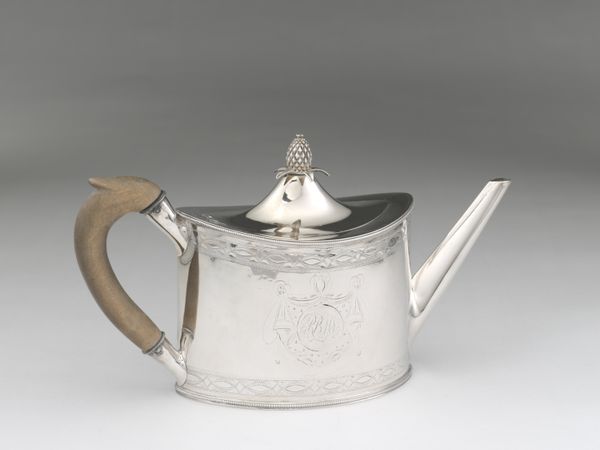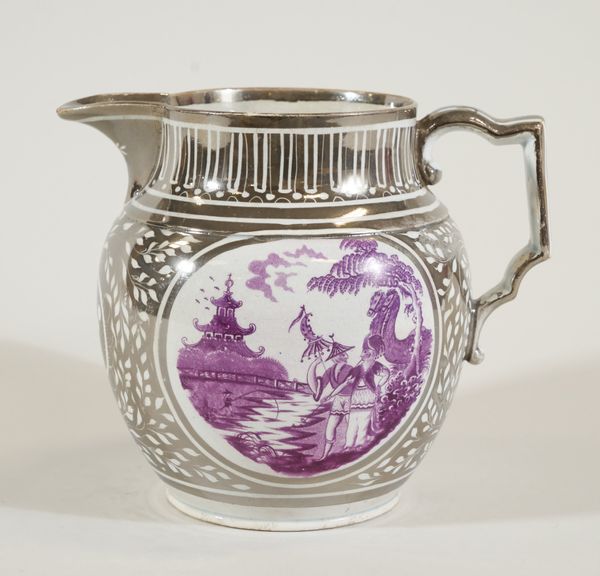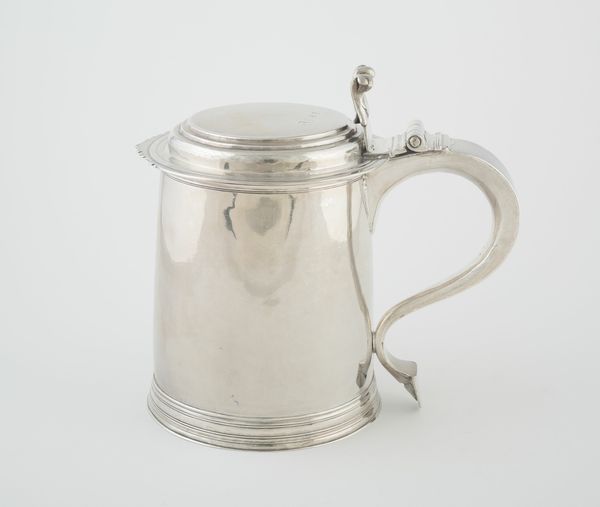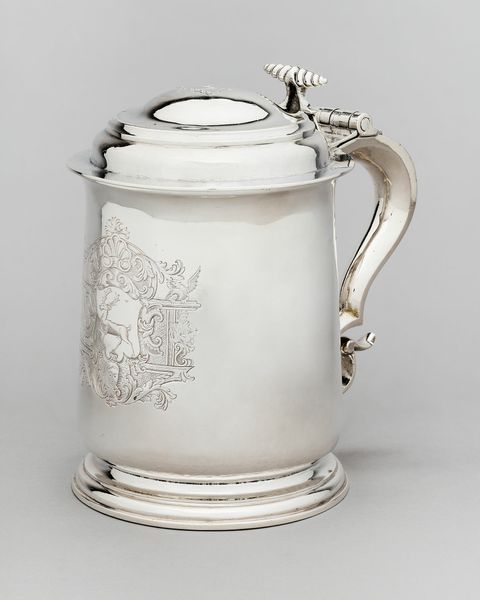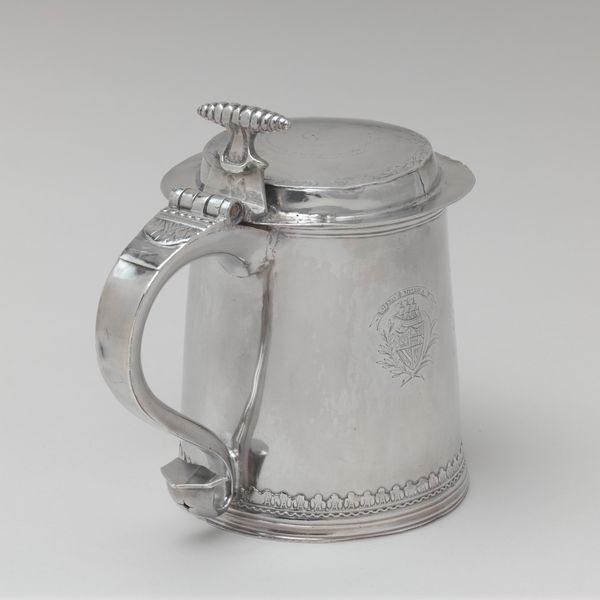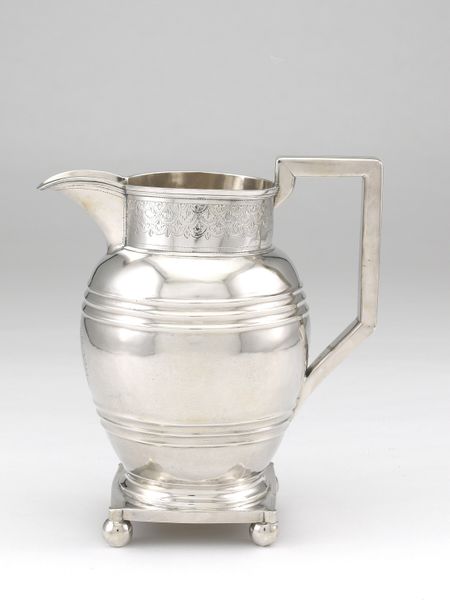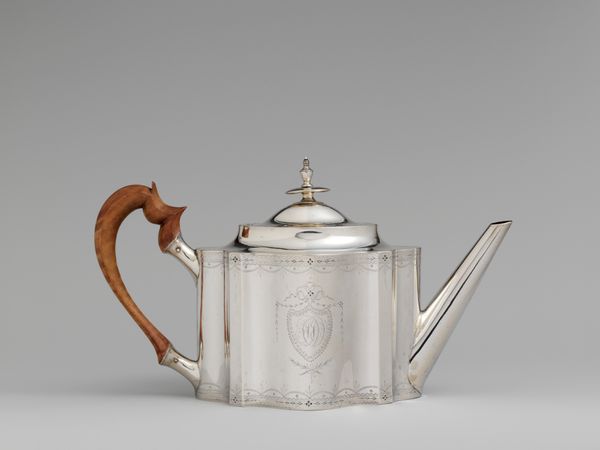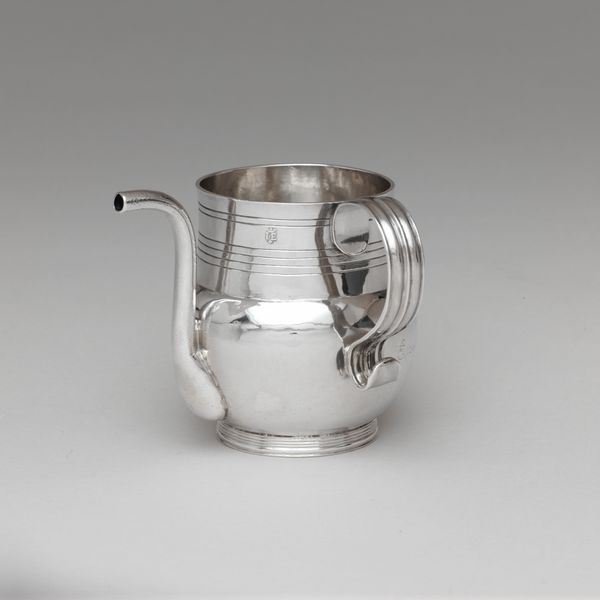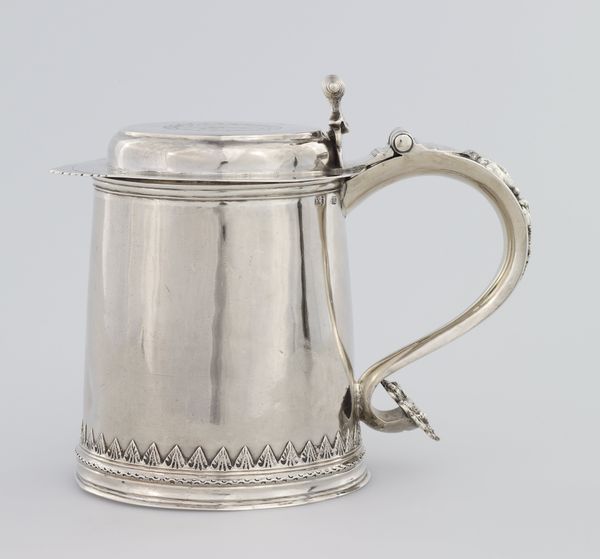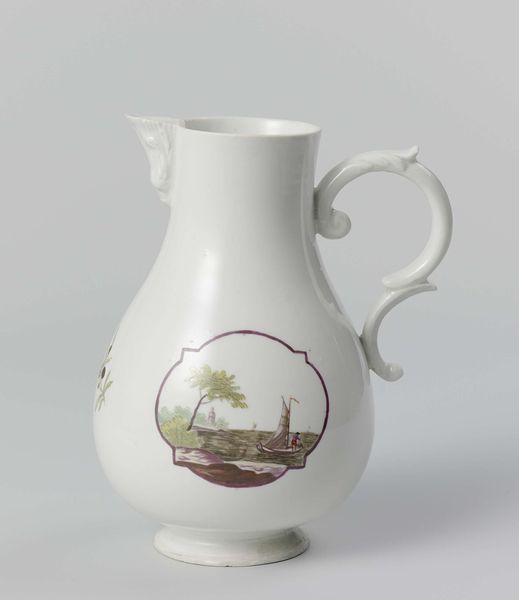
silver, metal
#
silver
#
metal
#
landscape
#
decorative-art
Dimensions: 2 3/4 x 5 13/16 x 2 7/16 in. (6.99 x 14.76 x 6.19 cm)
Copyright: Public Domain
Editor: Here we have a silver sugar bowl, probably from the 1940s, here at the Minneapolis Institute of Art. It's quite striking with those delicate, etched scenes of boats and palm trees. There’s even some text in Arabic. What do you see in this piece? Curator: This sugar bowl, while seemingly decorative, speaks volumes about the intertwined histories of colonialism, trade, and representation. Consider that sugar itself fueled the transatlantic slave trade. This seemingly innocuous object becomes a vessel carrying complex narratives of exploitation. Editor: So the sugar bowl isn’t just about a picturesque scene? Curator: Absolutely not. The landscape imagery, the silver, and even the Arabic script—all need deconstruction. How does this idyllic image on the bowl, likely mass-produced, relate to the lived realities of those in the depicted locations? What labor produced the sugar it once held? These decorative arts are always so much more. Editor: That's a lot to unpack! It makes you think about where the silver came from too, and who mined it. Curator: Exactly. Objects like these were often designed for a specific market, catering to certain perceptions of “exotic” locales. Think about the orientalist tendencies prevalent during the mid-20th century. What ideas about Arab culture, about island life, are being reinforced, or perhaps created? Editor: I see. So, this isn't just a pretty piece of silverware, but a representation of a complex, unequal relationship. Curator: Precisely. The sugar bowl transforms into a poignant artifact, a silent witness to power dynamics embedded within seemingly harmless consumer goods. This lens encourages us to question whose stories are told, and whose are erased, in these artistic representations. Editor: That gives me a lot to think about. I’ll definitely look at decorative arts differently from now on. Thanks!
Comments
No comments
Be the first to comment and join the conversation on the ultimate creative platform.
